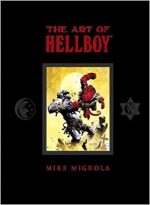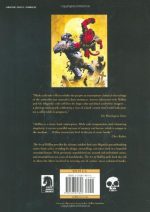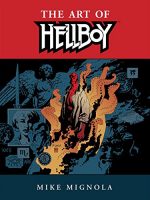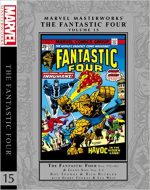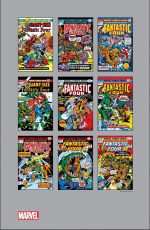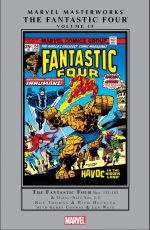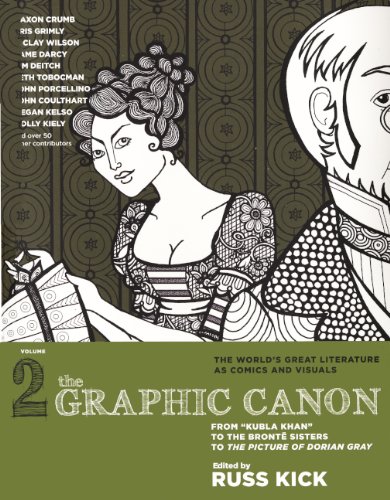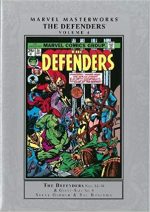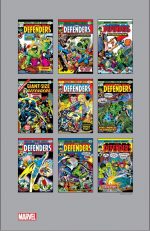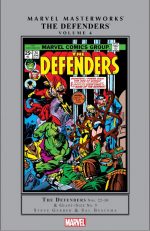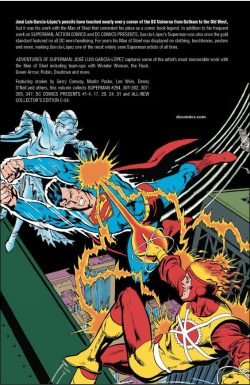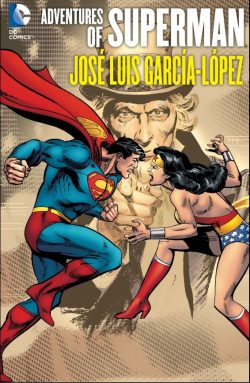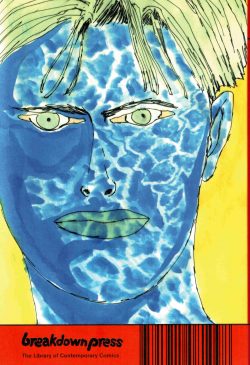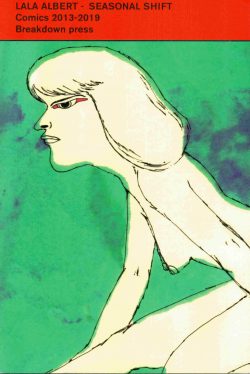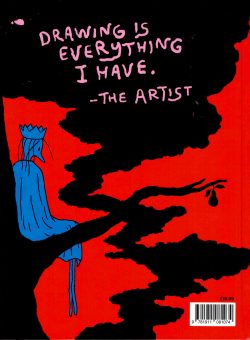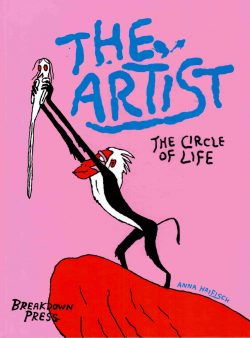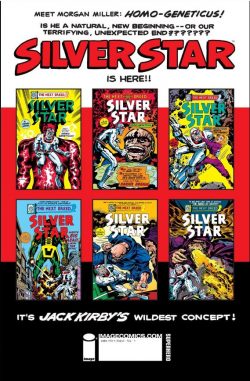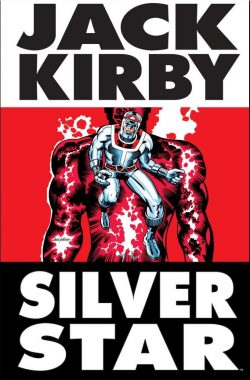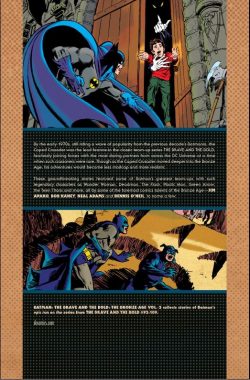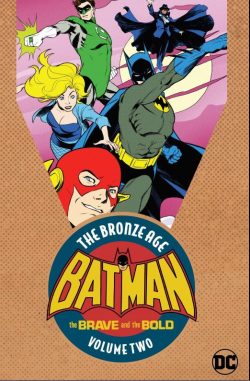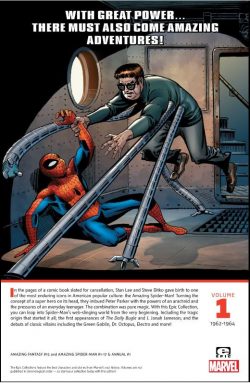
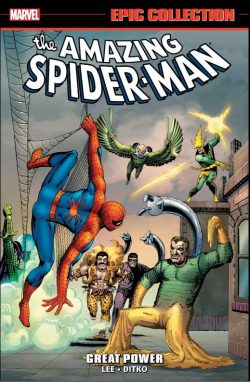
By Stan Lee & Steve Ditko, with Jack Kirby & various (Marvel)
ISBN: 978-0-7851-8834-6 (TPB)
Win’s Christmas Gift Recommendation: Timeless and Essential Comics Perfection… 10/10
Marvel is often termed “the House that Jack Built†and King Kirby’s contributions are undeniable and inescapable in the creation of a new kind of comic book storytelling, but there was another unique visionary toiling at Atlas-Comics-as-was: one whose creativity and even philosophy seemed diametrically opposed to the bludgeoning power, vast imaginative scope and clean, broad lines of Kirby’s ever-expanding search for the external and infinite.
Steve Ditko was quiet and unassuming, voluntarily diffident to the point of invisibility, but his work was both subtle and striking: innovative and meticulously polished. Always questing for detail, he ever explored the man within. He found heroism – and humour and ultimate evil – all contained within the frail but noble confines of human scope and consciousness. His drawing could be oddly disquieting… and, when he wanted, decidedly creepy.
Crafting extremely well-received monster and mystery tales for and with Stan Lee, Ditko had been rewarded with his own title. Amazing Adventures/Amazing Adult Fantasy featured a subtler brand of yarn than Rampaging Aliens and Furry Underpants Monsters and the ilk which, though individually entertaining, had been slowly losing traction in the world of comics ever since National/DC had successfully reintroduced costumed heroes.
Lee & Kirby had responded with Fantastic Four and the ahead-of-its-time Incredible Hulk but there was no indication of the renaissance to come when the cover of officially just-cancelled Amazing Fantasy featured a brand new and rather eerie adventure character.
This compelling and economical full-colour trade paperback and digital compilation re-presents the early run of Amazing Spider-Man #1-17, plus Annual #1 and that auspicious tale from Amazing Fantasy #15 (spanning August 1962 through October 1964): allowing newcomers and veteran readers to relive some of the greatest moments in sequential narrative.
The wonderment came and concluded in 11 captivating pages: ‘Spider-Man!’ tells the parable of Peter Parker, a smart but alienated kid bitten by a radioactive spider on a high school science trip. Discovering he has developed arachnid abilities – which he augments with his own natural engineering genius – he does what any lonely, geeky nerd would do when given such a gift… he tries to cash in for girls, fame and money.
Creating a costume to hide his identity in case he makes a fool of himself, Parker becomes a minor celebrity – and a vain, self-important one. To his eternal regret, when a thief flees past, he doesn’t lift a finger to stop him, only to find when he returns home that his Uncle Ben has been murdered.
Crazy for vengeance, Parker stalks the assailant who made his beloved Aunt May a widow and killed the only father he had ever known, only to find that it is the felon he couldn’t be bothered with. Since his social irresponsibility led to the death of the man who raised him, the boy swears to always use his powers to help others…
It wasn’t a new story, but the setting was one familiar to every kid reading it and the artwork was downright spooky. This wasn’t the gleaming high-tech world of moon-rockets, giant monsters and flying cars – this stuff could happen to anybody…
Amazing Fantasy #15 came out the same month as Tales to Astonish #35 (cover-dated September 1962) – the first to feature the Astonishing Ant-Man in costumed capers, but it was the last issue of Ditko’s Amazing playground. In this volume you’ll find the ‘Fan Page – Important Announcement from the Editor!’ that completely misled fans as to what would happen next…
However, the tragic last-ditch tale struck a chord with the reading public and by Christmas a new comicbook superstar was ready to launch in his own title, with Ditko eager to show what he could do with his first returning character since the demise of Charlton action hero Captain Atom…
Holding on to the “Amazing†prefix to jog reader’s memories, the bi-monthly Amazing Spider-Man #1 arrived with a March 1963 cover-date and two complete stories. It also prominently featured the Fantastic Four and took the readership by storm. The opening tale, again simply entitled ‘Spider-Man!’, recapitulated the origin whilst adding a brilliant twist to the conventional mix…
By now the wall-crawling hero was feared and reviled by the general public thanks in no small part to J. Jonah Jameson, a newspaper magnate who pilloried the adventurer from spite and for profit. With time-honoured comicbook irony, Spider-Man then had to save Jameson’s astronaut son John from a faulty space capsule in extremely low orbit…
The second yarn ‘Vs the Chameleon!’ finds the cash-strapped kid trying to force his way onto the roster – and payroll – of the FF whilst elsewhere a spy perfectly impersonates the web-spinner to steal military secrets. This is a stunning example of the high-strung, antagonistic crossovers and cameos that so startled the jaded kids of the early 1960s. Heroes just didn’t act like that and they certainly didn’t speak directly to the fans as in ‘A Personal Message from Spider-Man’ that’s reprinted here…
With his second issue, our new champion began a meteoric rise in quality and innovative storytelling. ‘Duel to the Death with the Vulture!’ catches Parker chasing a flying thief as much for profit as justice. Desperate to help his aunt make ends meet, Spider-Man starts to taking photos of his cases to sell to Jameson’s Daily Bugle, making his personal gadfly his sole means of support.
Matching his deft comedy and moody soap-operatic melodrama, Ditko’s action sequences were imaginative and magnificently visceral, with odd angle shots and quirky, mis-balanced poses adding a vertiginous sense of unease to fight scenes. But crime wasn’t the only threat to the world and Spider-Man was just as (un)comfortable battling “aliens†in ‘The Uncanny Threat of the Terrible Tinkerer!’
Amazing Spider-Man #3 introduced possibly the apprentice hero’s greatest enemy in ‘Versus Doctor Octopus’; a full-length saga wherein a dedicated scientist survives an atomic accident only to discover his self-designed mechanical tentacles have permanently grafted to his body. Power-mad, Otto Octavius initially thrashes Spider-Man, sending the lad into a depression until an impromptu pep-talk from Human Torch Johnny Storm galvanises Spider-Man to one of his greatest victories. Also included here is a stunning ‘Special Surprise Bonus Spider-Man Pin-up Page!’…
‘Nothing Can Stop… the Sandman!’ was another instant classic wherein a common thug who gains the power to transform to sand (another pesky nuclear snafu) invades Parker’s school, and must be stopped at all costs, whilst issue #5 finds the webspinner ‘Marked for Destruction by Dr. Doom!’ – not so much winning as surviving his battle against the deadliest man on Earth.
Presumably he didn’t mind too much, as this marked the transition from bi-monthly to monthly status for the series. In this tale Parker’s social nemesis, jock bully Flash Thompson, first displays depths beyond the usual in contemporary comicbooks, beginning one of the best love/hate buddy relationships in popular literature…
Sometime mentor Dr. Curtis Connors debuts in #6 when Spidey comes ‘Face-to-face with… The Lizard!’ Ttttas the wallcrawler fights far from the concrete canyons and comfort zone of New York – specifically in the murky Florida Everglades. Parker was back in the Big Apple in #7 to breathtakingly tackle ‘The Return of the Vulture’ in a full-length masterpiece.
Fun and youthful hi-jinks were a signature feature of the series, as was Parker’s budding romance with “older woman†Betty Brant, Jameson’s secretary/PA at the Daily Bugle. Youthful exuberance was the underlying drive in #8′s lead tale ‘The Living Brain!’ wherein an ambulatory robot calculator threatens to expose Spider-Man’s secret identity before running amok at beleaguered Midtown High, just as Parker is finally beating the stuffings out of school bully Flash Thompson.
This 17-page triumph was accompanied by ‘Spiderman Tackles the Torch!’: a 6-page vignette drawn by Jack Kirby and inked by Ditko, wherein a boisterous wall-crawler gate-crashes a beach party thrown by the flaming hero’s girlfriend… with suitably explosive consequences.
Amazing Spider-Man #9 is a qualitative step-up in dramatic terms, as Aunt May is revealed to be chronically ill – adding to Parker’s financial woes – with the action supplied by ‘The Man Called Electro!’ – an accidental super-criminal with grand aspirations.
Spider-Man was always a loner, never far from the streets and small-scale-crime, and with this tale – wherein he also quells a prison riot single handed – Ditko’s preference for tales of gangersterism starts to show through; a predilection confirmed in #10′s ‘The Enforcers!’ This is a classy mystery with a masked mastermind known as the Big Man using a position of trust at the Bugle to organise all New York mobs into one unbeatable army against decency.
Longer plot-strands are also introduced as Betty mysteriously vanishes, although most fans remember this one for the spectacularly climactic 7-page fight scene in an underworld chop-shop that has still never been beaten for action-choreography.
The wonderment intensifies with a magical 2-part yarn. ‘Turning Point’ and ‘Unmasked by Dr. Octopus!’ sees the return of the lethally deranged and deformed scientist and the disclosure of a long-hidden secret which had haunted Parker’s girlfriend Betty Brant for years.
The dark, tragedy-filled tale of extortion and excoriating tension stretches from Philadelphia to the Bronx Zoo and cannily tempers the trenchant melodrama with spectacular fight scenes in unusual and exotic locations, before culminating in a truly staggering super-powered duel as only the masterful Ditko could orchestrate it.
A new super-foe premiered in Amazing Spider-Man #13 with ‘The Menace of Mysterio!’ as a seemingly eldritch bounty-hunter hired by publisher J. Jonah Jameson to capture Spider-Man eventually reveals his own dark criminal agenda, whilst #14 is an absolute milestone in the series as a hidden criminal mastermind manipulates a Hollywood studio into making a movie about the wall-crawler.
Even with guest-star opponents the Enforcers and Incredible Hulk, ‘The Grotesque Adventure of the Green Goblin’ is most notable for introducing Spider-Man’s most perfidious and flamboyant enemy.
Jungle superman and thrill-junkie ‘Kraven the Hunter!’ makes Spider-Man his intended prey at the behest of embittered Spidey-foe the Chameleon in #15, and promptly reappears in the first Amazing Spider-Man Annual that follows.
A timeless landmark and still magnificently thrilling battle, tale, the ‘Sinister Six’ begins after a team of villains comprising Electro, Kraven, Mysterio, Sandman, Vulture and Doctor Octopus abduct Aunt May and Betty, and Spider-Man is forced to confront them without his Spider-powers – lost in a guilt-fuelled panic attack. A staggeringly enthralling Fights ‘n’ Tights saga, this influential tale also featured cameos (or, more honestly, product placement segments) by every other extant hero of the budding Marvel universe.
Also included from the colossal comic book are special feature pages on ‘The Secrets of Spider-Man!’ and the comedic short ‘How Stan Lee and Steve Ditko Created Spider-Man’ and a gallery of pin-up pages featuring ‘Spider-Man’s Most Famous Foes!’ – (the Burglar, Chameleon, Vulture, Terrible Tinkerer, Dr. Octopus, Sandman, Doctor Doom, The Lizard, Living Brain, Electro, The Enforcers, Mysterio, Green Goblin and Kraven the Hunter) – plus pin-ups of Betty and Jonah, Parker’s classmates and house and heroic guest stars…
Amazing Spider-Man #16 extended that circle of friends and foes as the webslinger battles the Ringmaster and his Circus of Evil and meets a fellow loner hero in a dazzling and delightful ‘Duel with Daredevil’.
An ambitious 3-part saga began in Amazing Spider-Man #17 wherein the rapidly-maturing hero touches emotional bottom before rising to triumphant victory over all manner of enemies. Sadly, ‘The Return of the Green Goblin!’ only opens that encounter here and you’ll need the next Epic Collection to conclude the saga…
Offering some consolation however is the entire debut tale from AF #15, in original art form, taken from the Library of Congress where it now resides and fully curated and commented upon by historian and scholar Blake Bell. Also on view are unused Ditko covers and early monochrome pin-ups, unretouched cover art for AS #11 and a barrage of pulse-pounding house ads, plus a photo-feature on the Marvel Bullpen circa 1964.
These immortal epics are something no serous fan can be without, and will make the ideal gift for any curious newcomer.
© 1962, 1963, 1964, 2019 MARVEL. All rights reserved.
